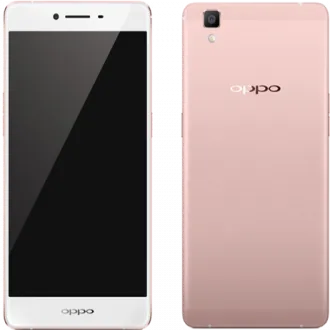Oppo R7SM USB Drivers will help your Windows computer recognize your Android device. Then you can transfer files from computer to Android or even install the stock or custom ROM to your Android device.
Network: Technology:
GSM / HSPA / LTE
Launch: Announced: 2015, October
Status: Available. Released 2015, December
Body: Dimensions: 151.8 x 75.4 x 7 mm (5.98 x 2.97 x 0.28 in)
Weight: 155 g (5.47 oz)
SIM: Hybrid Dual SIM (Nano-SIM/ Micro-SIM, dual stand-by)
Display: Type: AMOLED capacitive touchscreen, 16M colors
Size: 5.5 inches, 83.4 cm2 (~72.9% screen-to-body ratio)
Resolution: 1080 x 1920 pixels, 16:9 ratio (~401 ppi density)
Protection: Corning Gorilla Glass 3
Platform: OS: Android 5.1 (Lollipop); ColorOS 2.1
Chipset: Qualcomm MSM8939 Snapdragon 615 (28 nm)
CPU: Octa-core (4x1.5 GHz Cortex-A53 & 4x1.0 GHz Cortex-A53)
GPU: Adreno 405
Memory: Card slot: microSDXC (uses shared SIM slot)
Internal: 32GB 4GB RAM
: eMMC 4.5
Main Camera: Single: 13 MP, f/2.2, PDAF
Features: LED flash, panorama, HDR
Video: 1080p@30fps
Selfie camera: Single: 8 MP, f/2.4
Video:
Sound: Loudspeaker: Yes
3.5mm jack: Yes
Comms: WLAN: Wi-Fi 802.11 a/b/g/n/ac, Wi-Fi Direct, hotspot
Bluetooth: 4.0, A2DP
GPS: Yes, with A-GPS
Radio: No
USB: microUSB 2.0, USB On-The-Go
Features: Sensors: Accelerometer, proximity, compass
Battery: : Non-removable Li-Po 3070 mAh battery
Charging: Fast battery charging 20W: 75% in 30 min (VOOC Flash Charge)
Misc: Colors: Golden
Models: R7sf
Price: About 260 EUR
Tests: Performance: Basemark OS II 2.0: 930
Basemark X: 5302
Display: Contrast ratio: Infinite (nominal), 3.964 (sunlight)
Camera: Photo / Video
Loudspeaker: Voice 73dB / Noise 66dB / Ring 71dB
Audio quality: Noise -94.5dB / Crosstalk -94.9dB
Battery life:
Endurance rating 73h
Step 1 — Download and extract the Android USB Driver to your PC.
Step 2 — Click Start (Windows) -> Control Panel -> Device Manager (Select Device Manager).
Step 3 — On the Device Manager window find and click on computer name to select Add legacy hardware.
Step 4 — Select Next
Step 5 — Selext Install the hardware that I manually select from a list (Advanced), and click the Next
Step 6 — Select Show All Devices afterward click Next button again.
Step 7 — Click the Have Disk button.
Step 8 — Click Browse button to find the extracted Android ADB Driver -> android_winusb.inf and click on Open.
Step 9 — Click OK.
Step 10 — Now select the Android ADB Interface -> click Next button.
Step 11 — Click Next button again.
Step 12 — Windows Security box will appear, to confirm whether you really want to install the Android USB Driver, so just choose the Install this driver software anyway.
Step 13 — Once you clicked the Finish button, then repeat from step 2 to choose Android Composite ADB Interface.
Step 14 - Done.
